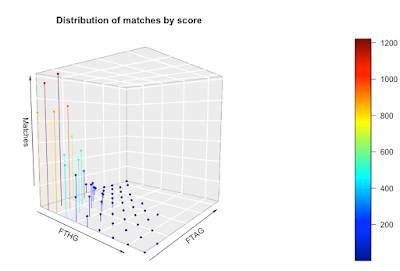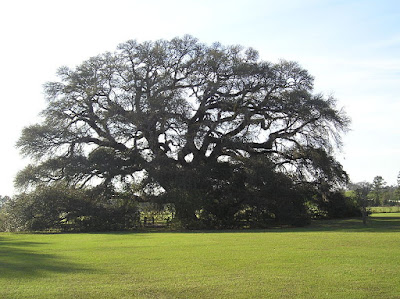Dinosaurs and time-travel don't mix
Time-traveling to see dinosaurs has been a science-fiction trope for a long time and of course stories of dinosaurs in modern times have been around since at least the Professor Challenger books of the 1910s. Like everyone else, I enjoyed the Jurassic Park movies, but sadly, something nagged at the back of my mind: could these animals breathe?
From what I've read, some re-animated dinosaurs would have serious trouble breathing today's atmosphere, and time travelers may have convulsions breathing ancient atmospheres. How we know this is an interesting story of itself.
Ice and amber and simulation
In the Jurassic Park movies, InGen scientists extracted dinosaur DNA from mosquitos trapped in amber. After sucking on dinosaur blood, mosquitos landed on trees, where they were trapped by sap that turned into amber. But mosquitos weren't the only thing trapped in amber. Amber also contains air bubbles, in other words, air samples from dinosaur times. By analyzing the gas composition of amber air bubbles, we can estimate the atmospheric composition at the time the bubble was formed [Cerling]. Obviously, these samples are rare.
Less directly, ice cores also give us a way of looking into atmospheric change. Voids in ice cores capture ancient air, and of course, some atmospheric gases dissolve in water and are trapped when the water freezes.
Amber and ice only take us back so far in time. To go all the way back, we have to rely on simulation and understanding the processes that drive the composition of the atmosphere.
For dinosaurs and human time travelers, the most important gas to understand is oxygen. Bear in mind, oxygen is a very reactive gas. It reacts with iron and water to form rust, and when things burn, oxygen turns into carbon dioxide, carbon monoxide, and other combustion products. It's also partially soluble in water; fish rely on dissolved oxygen and there's dissolved oxygen even at great depths.
The fraction of oxygen in the atmosphere is the result of two processes: non-organic processes that absorb oxygen, and organic processes that generate oxygen. To say it another way, free oxygen in a planet's atmosphere is a sign of life.
Oxygen by time - the l-o-n-g view and the long view
I went into the literature and pulled all the sources I could find that talked about the fraction of the atmosphere that contained oxygen [Kump, Holland]. Here are the chart and the story. This is a long story over deep time, so I'm going to give you the l-o-n-g view and then focus on more 'recent' times (the long view) that includes the dinosaurs and us.
4 to 2.45 billion years ago
In the beginning, the earth's atmosphere would have contained trace amounts of oxygen. Bear in mind, there was no plant life and the only source of oxygen was geological processes which would have produced minute amounts of the gas at best. The oceans would have had no oxygen, with the possible exception of 'oxygen oasis' in shallow oceans.
Single-celled life began at about -4 billion years, with photosynthesis appearing around -3.5 billion years.
2.5 to 1.85 billion years ago
As life got going, simple organisms produced more oxygen and the oxygen content of the atmosphere rose. The earth's oceans absorbed some of this oxygen (but the deep oceans remained oxygen-free), limiting the build-up in the atmosphere. The period 2.4 to 2.0 billion years ago is known as the "Great Oxidation Event", and the chemistry of the "earth system" changed, though geologists are unsure of some of the mechanisms [Holland, Kump].
1.85 to 0.85 billion years ago
Life keeps pumping out the gas. Eventually, there was enough to form the ozone layer, and of course, exposed iron deposits would have rusted, consuming more oxygen. The surface oceans became mildly oxygenated.
Multicellular organisms evolved, with fungi appearing about 1.5 billion years and the earliest plants around 0.85 billion years.
0.85 to 0.54 billion years ago
More of the same. The oxygen content rose in the atmosphere and the shallow oceans, but not in the deep oceans. This was a period of great change, there were three ice ages followed by unusually hot climates. Animals appeared on the scene.
0.54 billion years ago to the present time
Things start to get interesting around 360 million years ago, so that's where I'll focus.
Geologists separate the deep past into named periods. In some cases, there are clear boundaries between them, in others not so much. Here are the periods, the major plants and animals, and the oxygen content of the atmosphere for the last 360 million years.
| Period (million years) |
Name |
Animals and plants |
Oxygen content |
| 360-299 |
Carboniferous |
Large plants using lignin. Arthropods and amphibians. |
20-34% |
| 299-252 |
Permian |
Seed-bearing plants. Cicadas and beetles. Synapsids (very early line that lead to mammals) and Sauropsids (very early line that lead to reptiles). |
34-14% |
| 252-201 |
Triassic |
Turtles, flies, ichthyosaurs, early dinosaurs. Ferns, conifer trees. |
14-20% |
| 201-145 |
Jurassic |
Allosaurus, Stegosaurus, Diplodocus, Pterosaurus. Pine trees. |
20-27% |
| 145-66 |
Cretaceous |
Bees, ants, velociraptors, Tyrannosaurus rex. Palm trees. |
28-30% |
| 66-23 |
Paleogene |
Primates, bats, camels, cats, penguins, elephants. |
24-28% |
| 23-2.6 |
Neogene |
Hyenas, mammoths, kangaroos, hippopotamus. |
21-24% |
| 2.6-now |
Quaternary |
Bears, humans, sabre-toothed cats |
21% |
I've re-drawn my plot of oxygen content so you can orient yourself to the changes and periods.

During the Carboniferous period, plants evolved to use lignin which enabled them to grow much, much larger than before. Lycopods (relatives of the club moss), for example, grew to the size of trees. Lignin is resistant to bacterial decomposition and when it first appeared, bacteria couldn't digest it at all, meaning the world was littered with dead plants. Because they weren't digested and recycled, the dead plants went on to form coal (giving this period its name). Bacteria's inability to munch lignin is important for the atmosphere too; as bacteria breakdown carbon-rich material, they consume oxygen. In the Carboniferous period plants were busy pumping out oxygen, but bacteria weren't consuming it, so the oxygen content rose [Black]. As you might expect, the oxygen-rich atmosphere was a huge boon to animal life. Arthropods, early relatives of the insects, grew to enormous sizes. Arthropleura, a giant millipede, ranged in size from 0.3 meters to 2.5 meters, and famously, Meganeura, an early relative of the dragonfly, had a wingspan of about 70 cm.
The Permian period saw a huge drop off in oxygen content. My researches suggest this was triggered by volcanic activity pumping vast amounts of carbon dioxide (a greenhouse gas) into the atmosphere, leading to global warming, which caused reduced ocean circulation and a sharp drop in oxygen content in the deep oceans [Benton]. An oxygen content of about 14% put an end to a large number of species, it also isolated animal populations from one another as mountains became impossible to pass because of low oxygen [Huey]. This really was the great die off.
Things recovered slowly in the Triassic period. The oxygen content rose gradually as plants pumped it out. Early dinosaurs appeared on the scene and rapidly diversified. The oxygen content at the end of the Triassic period was about today's levels, so those dinosaurs could survive in modern times. Some of them were already getting big, Lessemsaurus for example was around 9m long. The Triassic came to an end with another mass-extinction event that occurred about 201.3 million years ago, and again it may have been caused by vulcanism. Volcanoes in what's now the Atlantic ocean (in an area called Central Atlantic Magmatic Province (CAMP)) released vast amounts of carbon dioxide and sulfur dioxide, which sparked huge climatic change, killing off many, many species.
Once again, life recovered and the oxygen content continued to rise. We're now in the Jurassic period. The dinosaurs really got going, but the oxygen levels weren't that much higher than today, so Stegosaurus probably could survive in today's atmosphere. The era ended with another extinction event, but this one is poorly understood.
During the Cretaceous period, the oxygen content rose to about 32%. By this time there were trees and a great deal of plant life, so an upper limiting factor on the oxygen content is forest fires; at 30% oxygen, forest fires would have raged out of control. Everyone's favorite dinosaur, Tyrannosaurs rex, was around at the end of Cretaceous period, as were Velociraptors and Brachiosaurus. The high oxygen content would have favored big animals, but these monsters wouldn't be able to breathe today's atmosphere.
A meteor impact put an end to the party about 66 million years ago.
The oxygen content has fluctuated over the last 66 million years, but not as much as in the prior billions of years.
It's in the bag
Some dinosaurs could be revived and live among us, but not others. The modern oxygen content of 21% spells bad news for reanimating Tyrannosaurus Rex and velociraptor and friends, on the other hand, Stegosaurus probably would be OK. But what about our time travelers?
It depends on when our time travelers travel back to. They might arrive at a time when oxygen was roughly at current levels, or maybe at a time with too much or too little. For too little oxygen, a small oxygen tank would do the trick. For too much oxygen, a gas mask that reduced oxygen would be enough to survive, but there could be an even simpler solution.
For people having panic attacks and hyperventilating, medical advice is often to breathe into a paper bag. This reduces the oxygen content in the blood because we re-inhale our exhaled carbon dioxide. Perhaps all our intrepid time travelers need to survive with the dinosaurs is a paper bag - maybe even the one their lunch came in.
Posts like this
If you liked this post, here are some others you might like.
References
[Benton] Michael J. Benton, Richard J. Twitchett, How to kill (almost) all life: the end-Permian extinction event, TRENDS in Ecology and Evolution Vol.18 No.7 July 2003
[Cerling] Cerling, T. Does the gas content of amber reveal the composition of palaeoatmospheres?. Nature 339, 695–696 (1989)
[Holland] Heinrich D Holland, The oxygenation of the atmosphere and oceans, Philos Trans R Soc Lond B Biol Sci. 2006 Jun 29; 361(1470): 903–915.
[Huey] Raymond B. Huey, Peter D. Ward, Hypoxia, Global Warming, and Terrestrial Late Permian Extinctions, Science 15 Apr 2005, Vol. 308, Issue 5720, pp. 398-401
[Kump] Kump, L. The rise of atmospheric oxygen. Nature 451, 277–278 (2008)
















